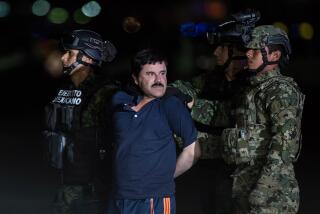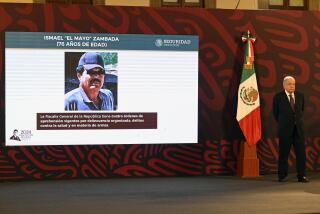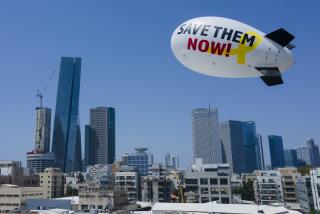Reagan Scuttles Contras Aid Deal : Sandinista Raid Went Awry, U.S. Officials Say
- Share via
WASHINGTON — Nicaragua’s attack on rebel camps across its northern border this week was not intended as an invasion of Honduras but was a limited incursion that ran into unexpected trouble, Reagan Administration officials said Wednesday.
Rebel units that blocked the Sandinistas’ route back into Nicaragua turned the raid into a two-day battle--and, the Administration hopes, a boon to its efforts to win funding from Congress for the contras , the officials said.
White House spokesman Larry Speakes called the raid the largest since 1982 and charged that a significant number of Nicaraguan troops were still inside Honduras on Wednesday.
“There’s a considerable force inside the Honduran border. There are reinforcements coming up. The situation is very volatile,” Speakes said.
Confusing, Contradictory
But other officials said that information from the battle zone was confusing and contradictory, and some maintained that virtually all the Sandinista raiders had withdrawn.
“For all practical purposes, it’s over,” said a State Department official monitoring the situation.
Administration officials have used the attacks as a major selling point in their attempts to win their proposed $100 million in aid for the contras from Congress, although some lawmakers believe few, if any votes, have been changed by the raids.
Some officials warned that the Administration’s initial account of the battles came almost entirely from the rebels themselves and could turn out to be inaccurate.
They acknowledged that the Administration pressured a reluctant Honduras into complaining publicly about the incident, both to help promote the bid for contras aid and to pave the way for the Pentagon to have U.S. helicopters ferry Hondurans to the front.
Some critics in Congress have questioned the Administration’s official version of events. “Whether this is as serious and dramatic as the Administration portrays is open to a good deal of questioning,” Sen. Edward M. Kennedy (D-Mass.) said.
But despite such skepticism, officials from several agencies insisted that the incursion had occurred, that it was the largest in several years and that the initial estimate of 1,500 Sandinista troops was correct.
“The first report did come from (Col. Enrique) Bermudez,” the contras’ military commander, one official said. “But everything we’ve seen since tends to confirm the numbers, at least.”
Followed Rejection
In a vivid, detailed account Tuesday, State Department spokesman Charles Redman said that two battalions of Sandinista troops had entered Honduras on Saturday. He noted pointedly that the action came “within 48 hours of the House rejection of aid to the Nicaraguan resistance.” He said the Sandinistas attacked contra positions near a “refugee center” Sunday but were driven off, “reportedly . . . by new resistance student volunteers who were armed that very morning.”
On Wednesday, however, Redman said: “If you’re asking can I confirm every fact and every number in that account, the answer is no.”
Secretary of State George P. Shultz called the action “a major invasion.” But other officials said Wednesday that the attack, though apparently the largest since 1982, appears to have been intended as a quick raid against two contra camps.
That plan was disrupted, they said, when a contra force returning to the camps from Nicaragua cut off the Sandinistas’ planned escape route.
Wanted Quick Strike
“They got caught in more than they bargained for,” one government analyst said. “They wanted a quickie--get in, do as much damage as you can and get out.”
Honduran presidential spokesman Lisandro Quezada agreed. “It is not in any way a large-scale invasion,” he told reporters in Tegucigalpa.
The Sandinistas’ timing appeared to help the Administration’s cause in Congress, where the Senate was debating Reagan’s request for the aid to the contras.
But the decision to launch the raid probably was founded on other calculations, a State Department analyst said.
“It looks like an attempt on the Sandinistas’ part to deal a damaging blow to the contras, knowing that they were going to get aid from Congress, to force them to use the aid to rebuild,” he said. “They probably guessed that we would not react the way we did--that after the heated debate on contra aid in the House, we would not come in with emergency assistance to the Hondurans.”
Even then, officials said, the Honduran government of President Jose Azcona Hoyo was reluctant to publicize the attack or to ask openly for American aid. “They hoped the whole thing would blow over,” one said.
Hondurans Still Uneasy
Another senior official said that the Hondurans remain uneasy about the presence of the contras’ main bases on their territory, which they have never openly acknowledged, and about allowing the United States to use their country as a base for covert operations against Nicaragua. “They’re very goosey about the U.S. role down there,” he said.
As late as Monday evening, Honduran government spokesmen publicly denied that any Nicaraguan incursion had occurred.
But U.S. officials warned the Hondurans that they could not get additional military aid without an open request, and Azcona responded by telephoning and then writing a letter to Reagan on Tuesday.
This week’s Nicaraguan attack was the latest of “dozens, maybe hundreds” of cross-border raids, one official said.
No Such Excuse
In the past, U.S. officials have characterized some of the Sandinista raids as “hot pursuit” of contra units. But officials said the Sandinistas had no such excuse this week, for there were no contras withdrawing ahead of them. And on Wednesday, the State Department broadened that argument to assert that the Sandinistas have no right to chase the contras anywhere.
More to Read
Sign up for Essential California
The most important California stories and recommendations in your inbox every morning.
You may occasionally receive promotional content from the Los Angeles Times.











